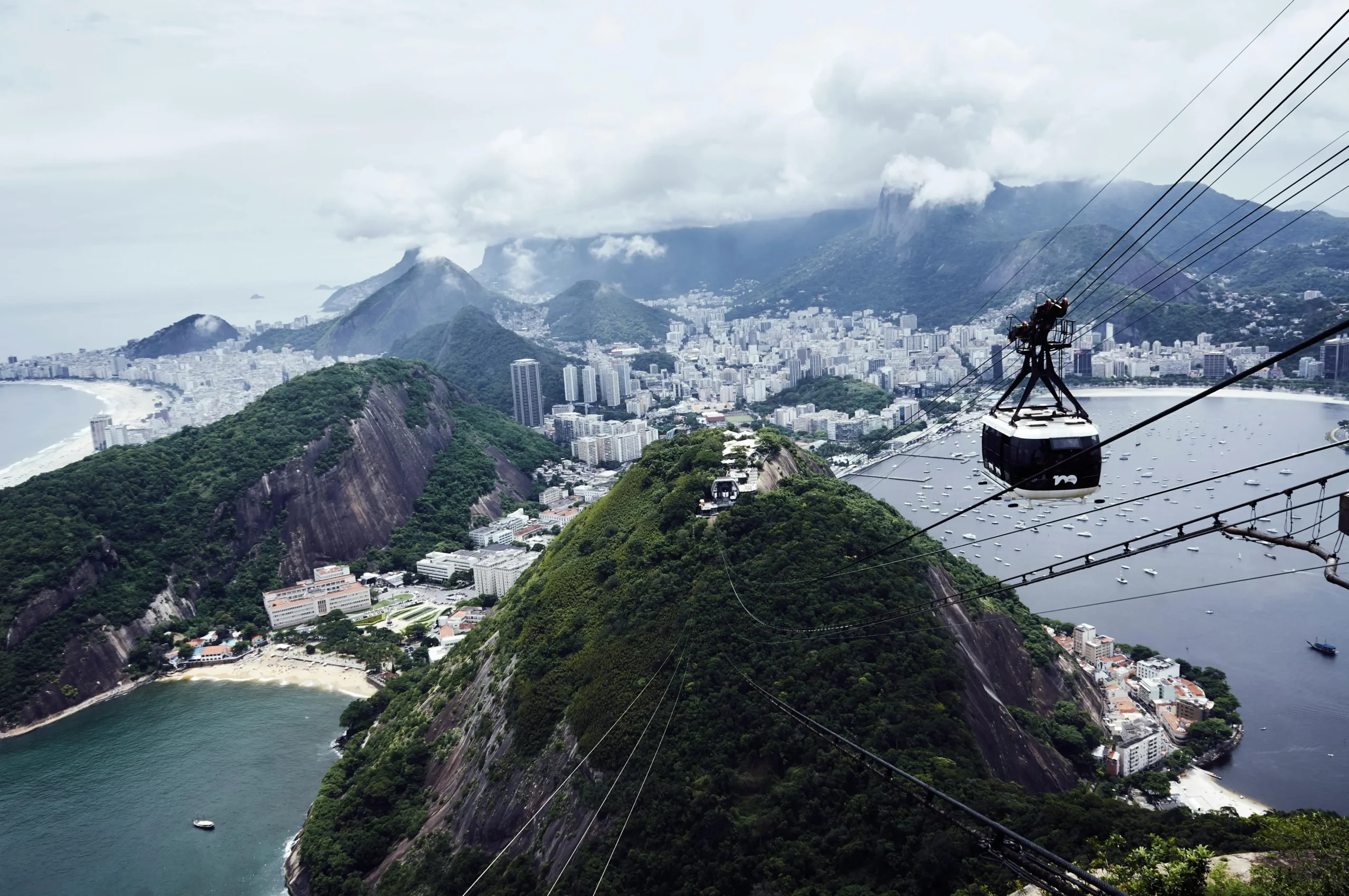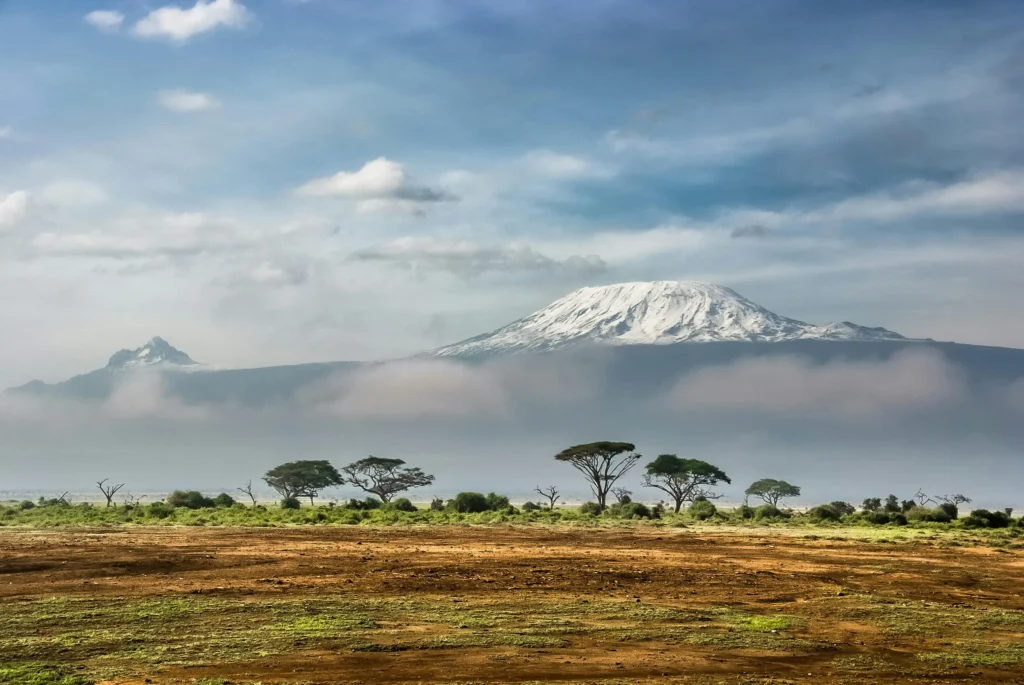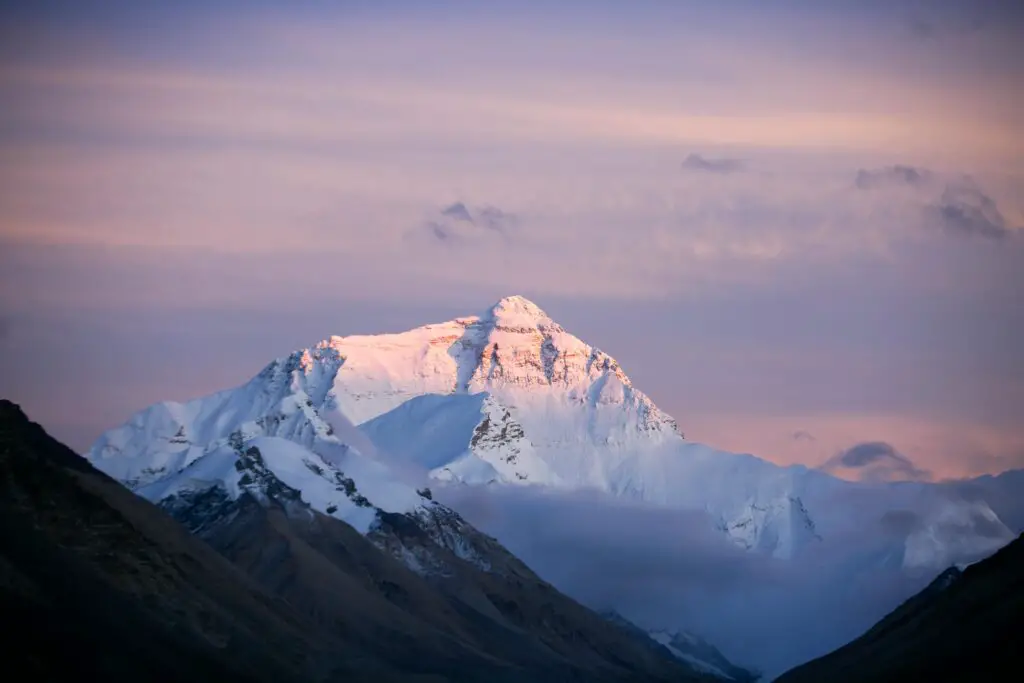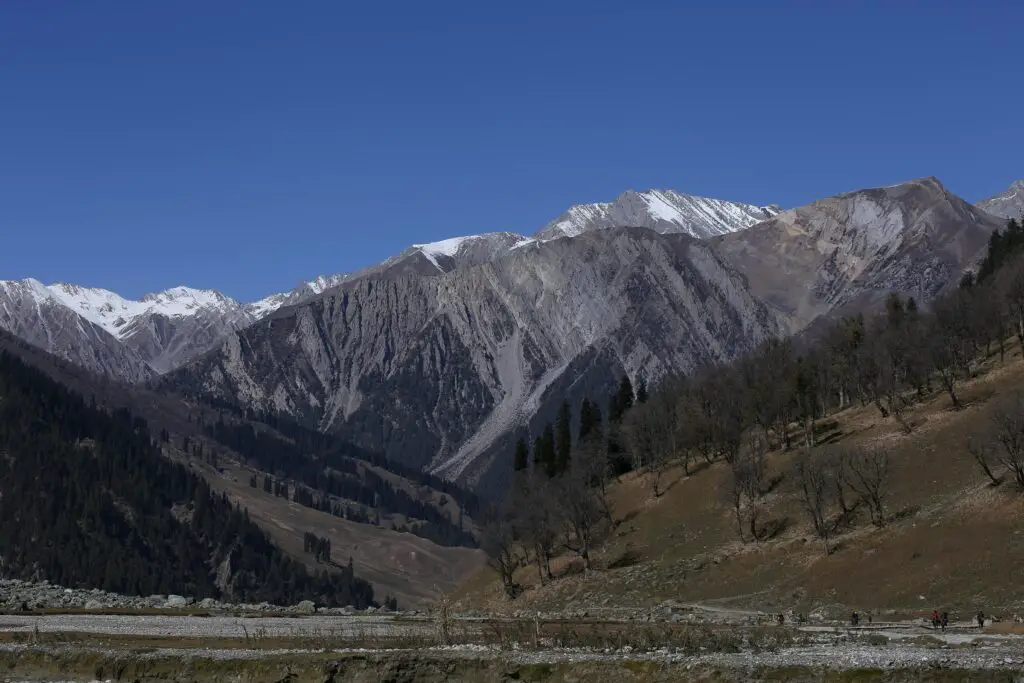Mountain
Most Beautiful Mountain Viewpoints in the World

Are you dreaming of standing on the edge of a cliff, gazing at towering peaks wrapped in clouds, or marveling at serene valleys kissed by sunlight? Mountain viewpoints are nature’s way of showing off its grandeur. They offer some of the most breathtaking sights you can find, and visiting them is an unforgettable experience.
Key Takeaways
- Discover famous mountain viewpoints across six continents.
- Learn about the best times to visit and how to plan a memorable trip.
- Get tips on sustainable travel practices to preserve these natural wonders.
What Makes Mountain Viewpoints So Special?
Mountain viewpoints are not just about the views; they’re about the emotions they stir in you. Whether you’re looking for adventure or peace, mountains deliver both in abundance. These spots often feel like gateways to another world, far removed from the hustle of daily life.
The best part? Each viewpoint has its unique charm. Some give you a sense of triumph when you climb to them, while others reward you with stunning vistas accessible via a simple drive. Whatever your travel style, there’s a mountain viewpoint waiting for you.
Most Beautiful Mountain Viewpoints Around the World
Europe
1. Matterhorn, Switzerland
The Matterhorn is one of the most iconic peaks in the Alps. Its symmetrical shape is instantly recognizable, and viewpoints like Gornergrat offer unparalleled panoramas. Visit in winter for snow-covered views or summer for lush greenery.

2. Preikestolen (Pulpit Rock), Norway
This flat-topped cliff hangs over the Lysefjord, offering dramatic views. A hike here is a must for adventurers, especially during Norway’s long summer days.
3. Dolomites, Italy
Known for jagged peaks and pastel sunsets, the Dolomites are a dream for photographers. Try the Seceda viewpoint for dramatic ridgelines and epic scenery.
Asia
1. Mount Everest Base Camp, Nepal
Standing at the foot of the world’s tallest mountain is a humbling experience. The trek to Everest Base Camp is challenging but rewards you with unforgettable views of Himalayan giants.

2. Tiger’s Nest Monastery, Bhutan
Perched on a cliffside, this sacred monastery offers jaw-dropping views of the Paro Valley. The hike up is steep but worth every step.
3. Mount Fuji’s Chureito Pagoda, Japan
Combine the beauty of Mount Fuji with the elegance of a traditional pagoda. Visit during cherry blossom season for a postcard-perfect scene.
North America
1. Moraine Lake, Canada
Nestled in the Canadian Rockies, Moraine Lake’s turquoise waters and surrounding peaks make it one of the most photographed spots in the world. Sunrise is the best time to visit.

2. Yosemite’s Glacier Point, USA
This viewpoint gives you a bird’s-eye view of Yosemite Valley, Half Dome, and the surrounding wilderness. It’s easily accessible by car during the summer.
3. Denali Viewpoint, Alaska
Denali, North America’s highest peak, looks spectacular from the designated viewpoints along the Parks Highway. On clear days, the mountain dominates the skyline.
South America
1. Fitz Roy, Patagonia
This dramatic peak straddles Argentina and Chile. Hike to Laguna de los Tres for a front-row seat to Fitz Roy’s towering spires.

2. Machu Picchu’s Mountain View, Peru
Climb up Machu Picchu Mountain for a bird’s-eye view of the ancient Inca ruins and surrounding peaks. It’s a perspective most visitors miss.
3. Cotopaxi Volcano, Ecuador
One of the highest active volcanoes in the world, Cotopaxi offers surreal views of its perfectly conical shape. The surrounding national park is great for hiking.
Africa
1. Mount Kilimanjaro’s Shira Plateau, Tanzania
This plateau offers expansive views of Kilimanjaro’s summit and the surrounding plains. It’s a great spot for those seeking adventure with a touch of luxury.

2. Drakensberg Amphitheatre, South Africa
This cliff face creates an imposing wall of rock that’s perfect for hiking and photography. It’s a UNESCO World Heritage site for good reason.
3. Simien Mountains, Ethiopia
Known as the “Roof of Africa,” these peaks offer dramatic landscapes and unique wildlife like the Gelada monkeys.
Oceania
1. Aoraki / Mount Cook, New Zealand
New Zealand’s tallest mountain is a magnet for climbers and sightseers. The Hooker Valley Track is a popular way to see it up close.

2. Blue Mountains’ Echo Point, Australia
This viewpoint gives you sweeping views of the Jamison Valley and the iconic Three Sisters rock formation.
3. Mount Otemanu, Bora Bora
For a tropical twist, Mount Otemanu rises majestically from Bora Bora’s turquoise lagoon. It’s a favorite spot for honeymooners and luxury travelers.
Best Times to Visit
- Winter: Perfect for snow-covered peaks like the Matterhorn.
- Spring: Ideal for cherry blossoms at Mount Fuji.
- Summer: Long daylight hours make places like Preikestolen more accessible.
- Autumn: Vibrant foliage enhances spots like the Dolomites.
Tips for Visiting Mountain Viewpoints
- Pack Smart: Always bring layers, water, and a camera.
- Plan Ahead: Research trails and check weather conditions.
- Stay Safe: Follow local guidelines, especially at high altitudes.
FAQs
Q: What’s the easiest mountain viewpoint to access?
A: Glacier Point in Yosemite is very accessible by car during summer.
Q: Are mountain viewpoints suitable for families?
A: Yes, many, like Moraine Lake, have family-friendly paths.
Q: How can I make my trip more budget-friendly?
A: Travel during the off-season and stay in local guesthouses.
Conclusion
Mountain viewpoints are nature’s masterpiece. Each one offers something unique, from towering glaciers to serene valleys. Whether you’re a seasoned trekker or a casual traveler, these spots promise to inspire and rejuvenate. So, pack your bags and start exploring—there’s a whole world waiting for you!
For more travel inspiration and tips, check out official tourism guides and hiking resources!

Mountain
Information About Climbing Mount Everest: A Complete Guide for Adventure Seekers

Key Takeaways
- Mount Everest is the highest peak in the world, standing at 8,848.86 meters (29,031.7 feet).
- Climbing Everest requires physical fitness, proper training, and substantial financial planning.
- The journey comes with challenges like extreme weather, altitude sickness, and high risks.
- Understanding routes, permits, and gear is crucial for a successful climb.
- Hiring Sherpas and climbing responsibly is essential for safety and environmental preservation.
Climbing Mount Everest is a dream that excites adventurers from around the world. Standing on top of the world’s highest peak is more than just a challenge; it’s an extraordinary achievement. But this journey isn’t for the faint of heart—it demands preparation, courage, and respect for nature.
In this guide, we’ll take you step-by-step through the essentials of climbing Mount Everest. Whether you’re planning your climb or just curious about the process, this article will answer all your questions.

What Makes Mount Everest So Special?
Mount Everest, part of the Himalayas, is the highest mountain on Earth, towering at 8,848.86 meters (29,031.7 feet). It lies on the border between Nepal and Tibet (China). For centuries, it has been a symbol of nature’s majesty and human perseverance.
The mountain was named after Sir George Everest, a British surveyor-general of India, in 1865. Locally, it’s known as Sagarmatha in Nepal and Chomolungma in Tibet. These names reflect its sacredness to local cultures, as well as its grandeur.

History of Climbing Mount Everest
The first successful ascent of Mount Everest was achieved in 1953 by Sir Edmund Hillary of New Zealand and Tenzing Norgay, a Nepalese Sherpa. Their journey marked the beginning of modern Everest expeditions.
Since then, thousands of climbers have attempted the summit. While some succeeded, many faced tragic ends due to harsh weather, avalanches, and altitude sickness. Understanding Everest’s climbing history reveals the dedication and risks involved in this pursuit.
Preparing to Climb Mount Everest
Before stepping onto the icy slopes of Everest, preparation is key. Here’s what you need:
Physical Fitness and Training
Climbing Everest demands peak physical condition. You’ll need to:
- Train for endurance and strength.
- Practice high-altitude climbing techniques.
- Acclimatize to low oxygen levels by spending time at higher altitudes.
Mental Preparedness
Mental resilience is equally important. Facing harsh weather, physical exhaustion, and isolation can take a toll on your spirit. Meditation, breathing exercises, and mental conditioning can help you stay focused.


How to Choose a Climbing Route
There are two main routes to Everest’s summit:
- South Col Route (Nepal) – The most popular and well-trodden path.
- North Ridge Route (Tibet) – A challenging and less crowded option.
Both routes have their own risks and benefits. The South Col is considered easier but busier, while the North Ridge is more remote and demanding.

Permits and Regulations
Climbing Everest isn’t free. You’ll need permits from the Nepalese or Tibetan governments, depending on your chosen route. These permits can cost between $11,000 and $15,000. Additional fees may apply for equipment, guides, and Sherpa support.
Make sure to follow local regulations to ensure your safety and respect for the mountain.
The Challenges of Climbing Everest
Climbing Mount Everest comes with significant risks:
- Altitude Sickness: Reduced oxygen levels can cause headaches, nausea, and even fatal complications.
- Weather Conditions: Sudden storms and extreme cold can turn deadly.
- Physical Demands: Exhaustion, dehydration, and frostbite are common issues.
Proper acclimatization, expert guidance, and good judgment can help minimize these risks.
Essential Gear for Everest Climbers
Packing the right equipment can make or break your expedition. Here’s a quick checklist:
- High-altitude boots, gloves, and thermal layers.
- Oxygen cylinders and regulators.
- Climbing ropes, ice axes, and crampons.
- Tents, sleeping bags, and cooking supplies.
Always double-check your gear before departure!

The Role of Sherpas
Sherpas are the unsung heroes of Everest climbs. These skilled guides assist climbers by carrying gear, setting up ropes, and navigating dangerous routes. Hiring Sherpas isn’t just about convenience—it’s a necessity for many climbers to ensure safety.
Respect their expertise and provide fair compensation for their efforts.
Best Time to Climb Mount Everest
The two primary climbing seasons are:
- Spring (April-May): Stable weather and optimal conditions.
- Autumn (September-October): Quieter season with cooler temperatures.
Avoid climbing during the monsoon or winter months due to extreme weather.
Environmental and Ethical Concerns
Mount Everest faces challenges from over-tourism, littering, and environmental degradation. Climbers are urged to:
- Follow a Leave No Trace policy.
- Participate in cleanup initiatives.
- Respect the local environment and culture.
FAQs About Climbing Mount Everest
How long does it take to climb Mount Everest?
It takes about two months to complete an Everest expedition, including acclimatization and summit attempts.
How much does it cost to climb Everest?
The total cost ranges from $30,000 to $85,000, depending on permits, gear, and guide services.
Is climbing Everest dangerous?
Yes, it’s extremely risky. Altitude sickness, avalanches, and extreme weather are just a few of the dangers climbers face.
Conclusion
Climbing Mount Everest is a monumental task that requires careful preparation, physical and mental strength, and a deep respect for nature. Whether you’re a seasoned mountaineer or a curious enthusiast, understanding the process helps you appreciate the courage it takes to conquer this legendary peak.
Mountain
What Are the Things to Follow When Climbing Mountains?

Mountain climbing is one of the most rewarding adventures you can experience, but it’s no walk in the park. Whether you’re tackling a small hill or a towering peak, preparation and caution are critical. The mountain isn’t just a place of beauty; it’s also a challenge to your physical and mental endurance.
In this guide, we’ll dive into everything you need to know before setting off on your mountain climbing journey. From preparation to safety tips, we’ll break it all down so even beginners can feel confident.
Key Takeaways
- Always research the mountain’s terrain, weather, and difficulty level before starting.
- Invest in proper gear, including sturdy footwear, layers of clothing, and safety equipment.
- Train your body for the physical demands of climbing.
- Follow safety guidelines and monitor your health throughout the climb.
- Respect the environment by practicing Leave No Trace principles.
Preparing for Your Mountain Climb
Research the Mountain
Before you even think about climbing, get to know your mountain. Is it beginner-friendly, or does it require advanced skills? What’s the weather like during the climbing season? Check online guides, blogs, or speak to seasoned climbers to understand the terrain and any potential hazards.
Also, make sure you know if permits are required. Many popular mountains, like Mount Everest or Kilimanjaro, require permits to ensure safety and manage traffic.

Build Your Physical Fitness
Mountain climbing isn’t just a stroll; it’s physically demanding. Start by improving your cardio fitness with activities like running, cycling, or swimming. Strengthen your legs and core with squats, lunges, and planks.
If you’re climbing at high altitudes, you’ll need to prepare for thin air. Spend time hiking at higher elevations if possible, or consult with your doctor about acclimatization tips.

Packing the Right Gear
Clothing and Footwear
Layering is key when climbing. Wear moisture-wicking base layers, insulating mid-layers, and a waterproof outer shell. This setup will keep you warm and dry, no matter how unpredictable the weather gets.
For footwear, invest in high-quality hiking or climbing boots. Break them in before your climb to avoid painful blisters.
Must-Have Equipment
Here’s a basic list of essentials you’ll need:
- Navigation Tools: Map, compass, or GPS device.
- Safety Gear: First-aid kit, helmet, and, for advanced climbs, ropes and harnesses.
- Lighting: A durable headlamp with extra batteries.
- Food and Water: Carry energy bars, nuts, and water bottles. Hydration bladders or purification tablets are great for longer trips.
- Emergency Supplies: Multi-tool, fire starter, and an emergency blanket.
Don’t forget a comfortable, weatherproof backpack to store everything.

Safety Guidelines While Climbing
Check the Weather
Weather in the mountains changes fast. Check the forecast just before you head out, and be prepared for surprises. If you see signs of bad weather approaching, it’s better to turn back than risk an emergency.
Stay on the Trail
Stick to marked paths to avoid getting lost or damaging fragile ecosystems. Shortcuts may look tempting but often lead to danger.
Pace Yourself
Don’t rush. Take breaks to rest and hydrate. Listen to your body—if you’re feeling unusually tired or dizzy, it’s time to pause or head back.
Watch for Altitude Sickness
If you’re climbing above 8,000 feet, watch for symptoms like headaches, nausea, or shortness of breath. These could be signs of altitude sickness. Descend immediately if symptoms worsen.

Respect Nature and Practice Ethics
Leave No Trace
The golden rule of outdoor activities: leave nature as you found it. Carry out all trash, avoid disturbing wildlife, and stick to trails to protect the environment.
Respect Local Communities
Many mountain regions are home to indigenous communities. Be respectful of their traditions, and follow any guidelines or restrictions they have in place.

Handling Emergencies
Know Basic First Aid
Minor injuries like blisters and sprains are common while climbing. Carry a first-aid kit and learn basic treatments for these conditions.
Have an Emergency Plan
Always let someone know your climbing route and expected return time. Carry a whistle, personal locator beacon (PLB), or satellite phone in case you need rescue.

Recovery After Your Climb
Once you’ve descended safely, it’s important to take care of your body. Stretch to loosen up tight muscles, and rehydrate with water or electrolyte drinks. Eating a balanced meal will help you recover energy quickly.
Spend some time reflecting on your climb, and celebrate the achievement—you’ve earned it!

FAQs
1. What should I pack for a mountain climb?
You’ll need proper clothing (layers), sturdy boots, navigation tools, food and water, and safety equipment like a first-aid kit and headlamp.
2. How do I prepare for climbing at high altitudes?
Train your body with cardio and strength exercises. To acclimatize, spend time at high elevations before the climb and stay hydrated.
3. What’s the best time of year for mountain climbing?
This depends on the mountain. Research the best climbing season, as conditions vary widely by location and altitude.
4. How can I prevent altitude sickness?
Climb gradually, stay hydrated, and pay attention to your body. If symptoms appear, rest and descend if necessary.
Conclusion
Climbing mountains is an incredible adventure, but it requires careful planning and respect for nature. By preparing your body, packing the right gear, and following safety guidelines, you can ensure your climb is both safe and enjoyable. Remember: the mountain will always be there, so prioritize your safety and take it one step at a time.
So, are you ready to conquer your next mountain? With the tips in this guide, you’ll be better prepared to make it to the summit and back!
Mountain
The Highest Mountains in the World You Should Visit

Exploring the world’s highest mountains is like stepping into a different realm. These towering peaks not only challenge your adventurous spirit but also offer breathtaking views, cultural experiences, and memories you’ll treasure for a lifetime. If you’re a mountain lover, there’s no better way to connect with nature and marvel at the wonders of the world.
Key Takeaways:
- The world’s tallest mountains are a must-visit for nature enthusiasts and thrill-seekers.
- Each mountain has unique features, from cultural significance to incredible views.
- Prepare well with the right gear, timing, and fitness for a safe adventure.
Why Visit the World’s Highest Mountains?
Mountains have always been symbols of beauty, adventure, and challenge. Whether you’re a trekker, a climber, or just someone who loves nature, these high-altitude wonders offer something for everyone. Visiting these mountains isn’t just about conquering heights; it’s also about experiencing diverse cultures, wildlife, and stunning landscapes. From the snow-capped peaks of the Himalayas to the rugged terrains of the Karakoram, every mountain tells a story.
The Top 10 Highest Mountains You Should Visit
1. Mount Everest (8,848.86 meters, Nepal/China)
Mount Everest, the tallest mountain on Earth, is the dream destination for every adventurer. The Everest Base Camp trek is a popular option for those who want a taste of the mountain without climbing to the summit. You’ll experience the rich Sherpa culture, stunning glaciers, and panoramic views of the Himalayas.
Best Time to Visit: Spring (March-May) and Autumn (September-November).

2. K2 (8,611 meters, Pakistan/China)
Known as the “Savage Mountain,” K2 is one of the most challenging peaks to climb. Even if you’re not a mountaineer, the surrounding region offers breathtaking landscapes, including the famous Baltoro Glacier.
Best Time to Visit: Summer (June-August).

3. Kangchenjunga (8,586 meters, Nepal/India)
Kangchenjunga is considered sacred in local culture. Its remote trekking routes take you through lush forests, diverse wildlife, and pristine mountain views, offering an off-the-beaten-path adventure.
Best Time to Visit: Spring (March-May).

4. Lhotse (8,516 meters, Nepal/China)
Sharing its base camp with Mount Everest, Lhotse offers striking rock formations and fewer crowds. It’s a great option for trekkers looking for a quieter Himalayan experience.
Best Time to Visit: Spring and Autumn.

5. Makalu (8,485 meters, Nepal/China)
Makalu’s iconic pyramid shape makes it one of the most stunning peaks. It’s a bit remote, so you’ll enjoy unspoiled wilderness and peace away from the crowds.
Best Time to Visit: Spring.

6. Cho Oyu (8,188 meters, Nepal/China)
This is one of the easier 8,000-meter peaks to climb, making it popular among beginner mountaineers. The views of Everest and the surrounding ranges are unforgettable.
Best Time to Visit: Spring and Autumn.

7. Dhaulagiri (8,167 meters, Nepal)
Dhaulagiri, known for its dramatic ridges, offers a less commercialized trekking experience. It’s perfect for those seeking solitude and raw beauty.
Best Time to Visit: Spring and Autumn.

8. Manaslu (8,163 meters, Nepal)
Called the “Mountain of the Spirit,” Manaslu is known for its remote trekking routes that pass through traditional villages and diverse ecosystems.
Best Time to Visit: Autumn.

9. Nanga Parbat (8,126 meters, Pakistan)
Also known as the “Killer Mountain,” Nanga Parbat is famous for its dramatic rise above the Indus River. The Fairy Meadows trek provides stunning views and serene landscapes.
Best Time to Visit: Summer.

10. Annapurna (8,091 meters, Nepal)
The Annapurna Circuit is one of the most popular trekking routes in the world. Along the way, you’ll encounter picturesque villages, lush greenery, and towering peaks.
Best Time to Visit: Spring and Autumn.

Preparing for a High-Altitude Adventure
1. Fitness and Acclimatization
High altitudes can be tough on the body. Build your endurance and strength with regular exercise, and give yourself time to acclimatize during the trek.
2. Gear and Equipment
Pack essentials like sturdy boots, warm clothing, and a reliable backpack. Don’t forget trekking poles, sunscreen, and a first-aid kit.
3. Timing and Planning
Research the best seasons to visit and plan your trip accordingly. Weather can change rapidly in mountainous regions, so flexibility is key.
Safety Tips for High-Altitude Travel
- Stay hydrated and eat high-energy foods.
- Watch out for symptoms of altitude sickness, such as headaches or dizziness.
- Always travel with a guide or join a reputable trekking group.
FAQs
1. What’s the best time to visit Mount Everest?
The best time to visit Everest is during Spring (March-May) or Autumn (September-November) when the weather is clear and stable.
2. Which mountain is easiest for beginners to trek?
Cho Oyu and the Annapurna Circuit are great options for beginners due to their accessible trekking routes.
3. How can I avoid altitude sickness?
Acclimatize gradually, stay hydrated, and avoid overexertion. Consult a doctor before your trip if you’re concerned.
4. Are these mountains safe to visit?
While they offer incredible experiences, these mountains require preparation and caution. Traveling with a guide is highly recommended.
Conclusion
Visiting the highest mountains in the world isn’t just about scaling heights; it’s about immersing yourself in nature, culture, and adventure. Each peak has its own charm and challenges, making it a bucket-list-worthy experience for mountain lovers. So, gear up, plan wisely, and embark on a journey you’ll never forget!
-

 Animals12 months ago
Animals12 months agoTypes of Ants Living in the World and Information
-

 Forests12 months ago
Forests12 months agoThe 10 Best Forests to Visit in the World
-

 Ocean1 year ago
Ocean1 year agoOceans in the World and Their Information & Locations
-

 Forests4 years ago
Forests4 years agoWhat Is The Biggest Rainforest In The World?
-

 Animals4 years ago
Animals4 years agoMost Popular Wild Animals in The World
-

 Animals4 years ago
Animals4 years ago(10) Insects Are Animals in the world?
-

 Forests12 months ago
Forests12 months agoThe Main Factors That Contribute to Forest Destruction
-

 Nature10 months ago
Nature10 months agoThe 10 Largest Farms in the World



